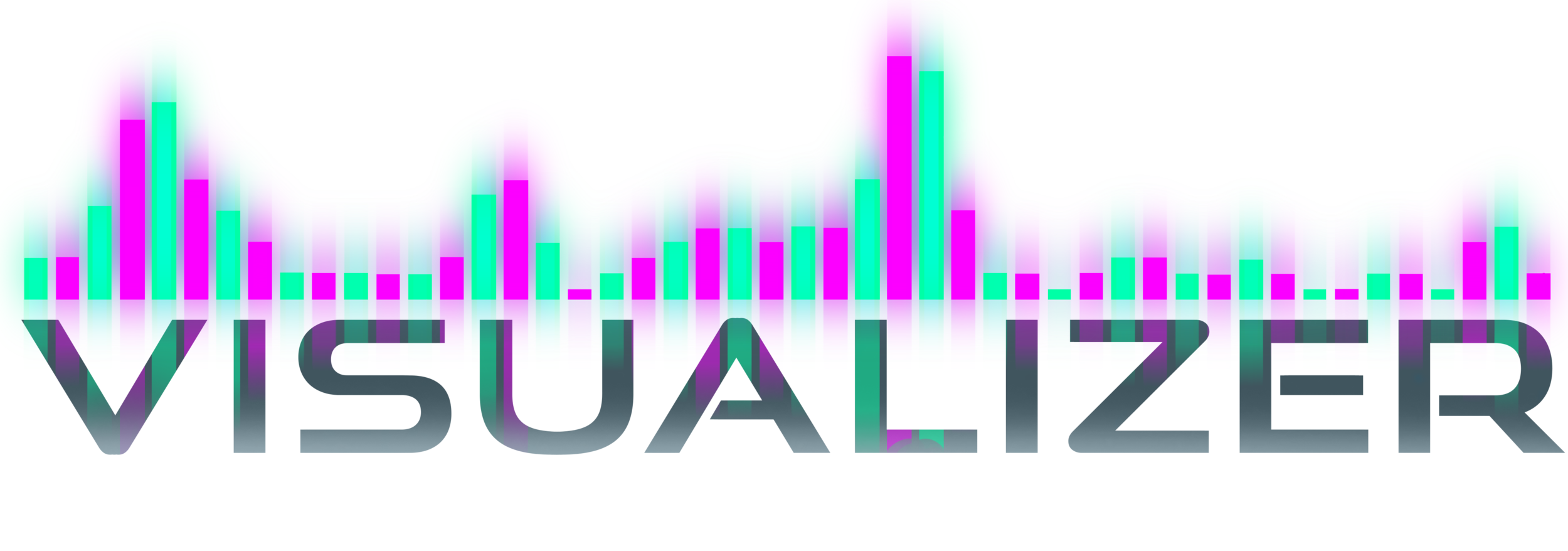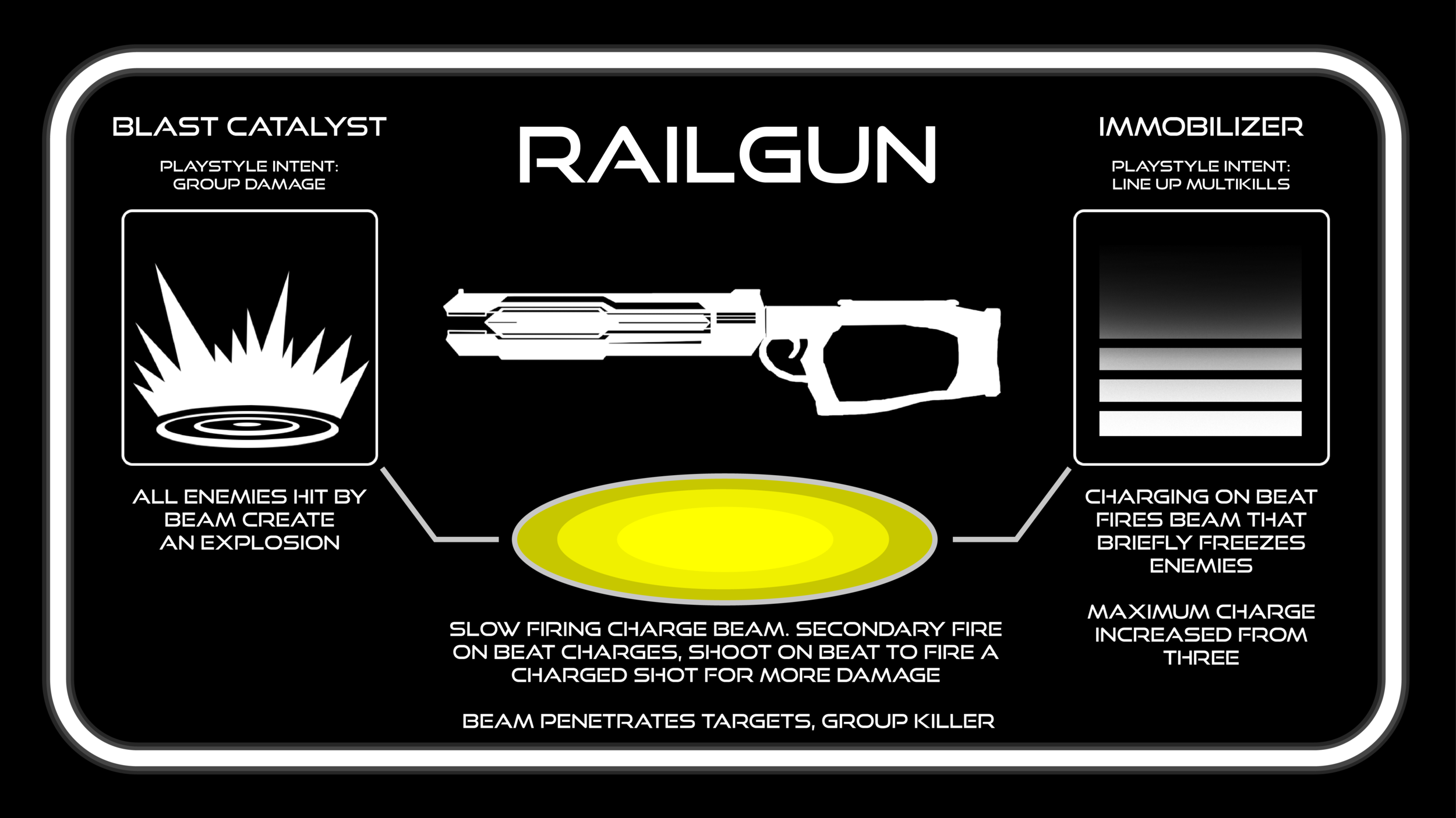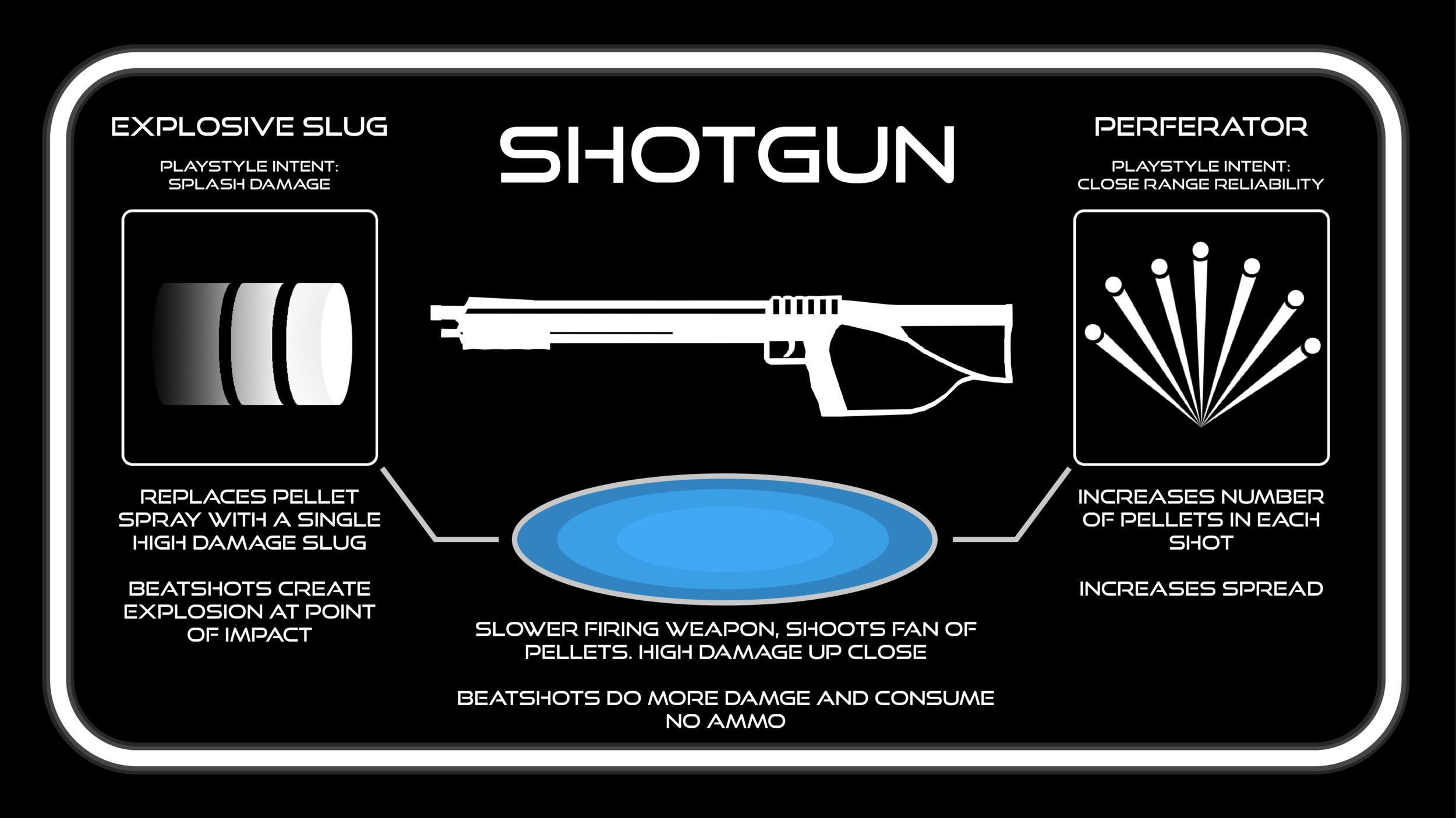VISUALIZER - Single Player Rhythm Shooter
FPS designed around the mechanic of firing to the beat. 5 campaign levels, a bossfight, and horde mode.
Made in Unity
Served as a systems designer, worked primarily on weapons design and integration. 13 person team
Download At: https://little-lizard-studios.itch.io/visualizer
For my final semester at Champlain College, I joined a new team, Little Lizard Studios, and worked on their project Visualizer, which was already in development. The game has the player take the role of ‘the janitor’, a virtual exterminator who must delve into the digital depths of a corrupted music program to stamp out a pesky infestation of hostile ghost frequencies. The player engages in FPS battles in colorful, dance club themed arenas using an arsenal of 5 unique weapons, all of which are significantly more effective when fired on the beat. The player can do battle in the five campaign levels, culminating in a final boss fight, gather a currency from kills to purchase two unique upgrades for each weapon, and put their endurance to the test against the infinite waves of ghost frequencies in endless mode. As a systems designer for the team, I was given the responsibility of designing and implementing the new weapons, the upgrades, and maintaining the weapon balance of the game. I was ecstatic to accept this role, as working with the weapons in FPS style games is currently my favorite type of systems design.
I was brought on to to the Visualizer team to build weapons. When I walked into my first team meeting for weapons planning, alongside the lead systems designer, effects designer, sound designer, and animator, I came prepared with a document containing seven unique concepts for weapons. Of course, due to our time constraints, we were only able to implement three new weapons, for a total of five. After this meeting, it was my responsibility to build and implement two of these new weapons, and maintain and improve the rest. My first goal in handling this task was to build each weapon to fill a specific role in the games combat, so that the gameplay feel of each one felt differentiated from the rest of the roster. As I prototyped each weapon and tuned the existing prototypes of the others, my process was to build a sloppy yet functional prototype as quickly as possible, and then aggressively put it to the test by using it in game, even if it was still missing features, to empirically make sure the weapon was performing it’s destined role in the gameplay. The burst rifle is a mid-to-long range general combat weapon which is efficient and useful, but with drawbacks if the player makes mistakes. The katana is a high risk, high reward, high skill, specialized close range weapon, with deadly consequences if used incorrectly. As I was learning the game after joining the team, I found that the two weapon prototypes my comrades had initially created only incorporated the beat on a surface level, by merely having the weapon do more damage when fired on the beat. In my designs, and my improvements to the existing prototypes, I wanted to take this to the next level, to drive home the rhythmic elements of our gameplay and make the player feel meaningfully rewarded for their beat-shooting skill. My philosophy was if a function factor could be affected by the beat, it should be, and so both the katana and burst rifle perform significantly differently when fired on beat or off. When the burst rifle is fired off beat, the burst is slow, causing the weapon to only be fireable once every other beat; when fired on beat, the damage increases, and the speed of the burst increases as well, allowing the player to output bursts twice as fast. Beat-shots also do not consume ammo which rewards the player for getting into a rhythm by allowing them to put out an unending stream of rapid damage. Firing off beat not only totally disrupts this rhythm, but it also uses a round from the gun’s deliberately very limited magazine which, combined with the lengthy reload time, incentivizes the player to keep targets at range or carefully maintain the rhythm to avoid being vulnerable while reloading when they mess up.
The katana causes the player to lunge forward and slash a single enemy when swung off beat. When swung on beat, the slash does more damage, has more range, lunges farther, and hits all enemies in its range. Because most of the enemies in the game use melee attacks, using the katana requires the player to be in the most risky position possible. To compensate, they must balance their aggression, stay on their toes, and position themselves so they can use the lunge to maximize deadliness, while being able to disengage for the brief time between beats. Striking the fine balance between deadliness and risk was the greatest challenge when designing the katana. In order to keep the player from being too vulnerable, the katana also includes a parry ability that throws enemies back, deflects projectiles, and heals the player a small amount for each enemy hit, allowing the player to create space while overwhelmed, and break up or create groups to cut down. If swung on beat, the parry hits everything in front of the player, just like the katana’s attack.
I also had the responsibility of designing and implementing the upgrades for all the weapons. Each weapon has two upgrades and the player can equip one at a time on their weapon after purchasing it. I designed each weapon’s upgrades around an engaging aspect of their play style, with the goal of allowing a player who finds that aspect to be the weapon’s source of fun to evolve the weapon to emphasize it. The katana’s upgrades are a great example. It’s first upgrade, called bladebeam, causes the sword to cast a large, relatively short ranged projectile with every swing. This upgrade was intended to capitalize on the weapons raw deadliness, and appeal to players who value the weapon as a killing workhorse. The second upgrade, Rev-Lunge, causes every beatslash to increase the distance of the weapon’s lunge, up to a cap, with slashing offbeat resetting it. This upgrade was built to emphasize the weapon’s unique style of skill based movement, allowing players to use the weapon and the environment in a new, high speed way, provided they can stay on beat.








